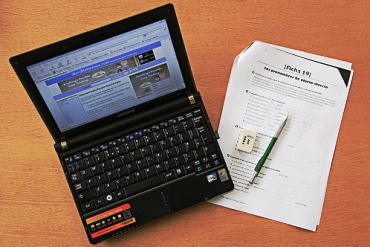How do Asia capable leaders build connections with Asia?
EXPLORE school community demographics.
INVESTIGATE Asia connections that exist in school communities.
IDENTIFY opportunities to establish partnerships between the school and local communities that represent Asia.
INVITE an Asia Literacy Ambassador to speak to staff and students.
CONNECT with Asia through school partnerships.
All schools sit within their own distinct community respecting the local ethos, culture, history, vision and values, and provide all students with the opportunity to excel.
School leaders ‘recognise the multicultural nature of Australian people ... They recognise and use the rich and diverse linguistic and cultural resources in the school community’. (AITSL Standard)
Asia in Australia
Where Australia’s immigrants were born shows the top three birthplaces for immigrants in suburbs and towns across Australia.
Conduct an environmental scan by rolling over suburbs in your local community to find the demographic information relating to your school.
- What community organisations representing migrants and visitors from Asian countries are operating within your area?
- What do these community organisations offer in terms of support to schools so that students gain a better understanding of the Asia region?
Community profiles
The Australian Bureau of Statistics provides a comprehensive statistical picture in Excel format for selected local government areas within the greater capital city area and Commonwealth electoral divisions of Victoria.
Characteristics are provided about people from selected countries of birth relating to people, families and dwellings.
- Explore the community profile statistics for your state/ territory to explore the cultural diversity of your school’s neighbourhood.
- What does this data tell you about your local community?
ABS Community profile statistics:
School business partnerships
The Australian Department of Education's Seven key principles for school-business partnerships 2021 acts as a clear guide in establishing partnerships with key businesses and organisations.
It also includes guidance from the Australian Industry Group’s School-Industry STEM Skills Partnerships.
Effective and sustainable partnerships, it should:
- enhance student STEM and 21st century skills learning and outcomes
- benefit both schools and businesses
- be built on strong foundations with a shared vision and objectives
- have the support of school community
- be embedded in school and business cultures
- have the support of school and business leadership; and
- be adequately resourced by both schools and business.
AEF's School Business Partnerships project help students see the relevance of Asia capabilities beyond the classroom and help school communities understand the importance of Asia for Australia’s future. At the heart of School Business Partnerships are Asia Literacy Ambassadors: people in a range of industries who demonstrate the practical knowledge, skills and understanding required to work with Asia and with Asian-Australian communities.
Illustrations of practice
Video of Kylie Hill and her students from Le Fevre High School SA talking about the importance of students having the opportunities to develop their Asia capabilities.
Reflect
- Investigate the key Asia-focused businesses and organisations that exist within your community. Identify those where there may be potential to establish a partnership.
- Discover Asia Literacy Ambassadors in your local area and invite one to speak at your school.
Explore how the following schools have developed school business partnerships.
-

- University High School VIC...more »
-

- Heathmont College VIC...more »
-

- The Southport School QLD...more »
School partnerships with Asia
School-to-school partnership programs have significant positive effects on global understanding and attitudes of primary and secondary students.
The Australia–Asia BRIDGE School Partnerships Project connects Australian teachers, students and school communities with their counterparts across Asia. Over 220 schools across Australia are partnered with schools in Indonesia, China, South Korea, Thailand and Malaysia.
BRIDGE builds teacher capacity through school partnerships to:
- develop intercultural understanding
- improve Asian language skills (if applicable)
- enhance information communication technology (ICT) skills
- establish sustainable school partnerships and a community of learners.
Video of North Sydney Demonstration School Principal Myra Wearne talking about how her students' language learning has benefited from the China school partnership.
Reflect
As you watch this video consider:
- What were some of the benefits for students in connecting directly with their peers from China?
- What opportunities does your school provide for students to connect with their peers in Asia?